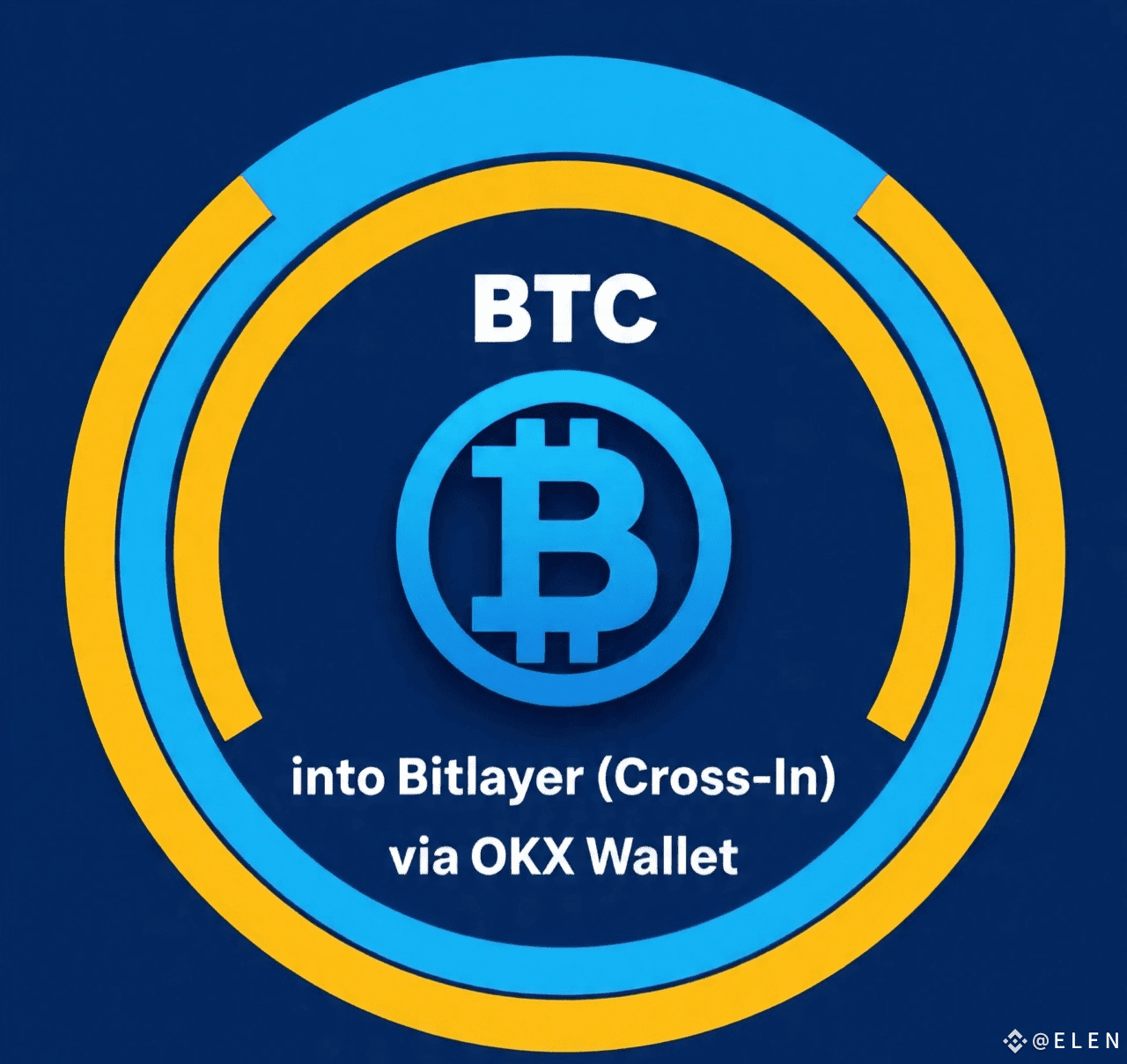1. Open the Bitlayer Bridge page
Go to bitlayer.org → Bridge & Earn (the official bridge UI). That’s the portal you’ll use to deposit BTC to Bitlayer.
2. Connect your wallet → choose OKX Wallet
Click Connect Wallet and pick OKX Wallet from the list. Follow the OKX Wallet popup / mobile deep-link to authorize the connection and allow the Bridge to view your BTC address.
3. Select “Bridge In” and the asset (BTC)
In the Bridge UI choose the Bridge-In (cross-in) flow and select BTC (or the specific BTC asset you plan to move). The interface will show the required steps and minimum amounts. (Bitlayer docs note a minimum transfer threshold — check the bridge UI; official docs list 0.0005 BTC as a common minimum).
4. Enter amount & confirm UTXO selection (if prompted)
Enter how much BTC you want to bridge. Some UI flows ask you to select which UTXOs/funding inputs to use — confirm those carefully to avoid accidentally spending funds you didn’t intend to.
5. Generate the deposit (Bitlayer) address / instructions
The bridge will generate a deposit address (an on-chain Bitcoin address or an instruction to inscribe for BRC20) and show exact on-chain data you must send (amount, fee suggestion, sometimes an OP_RETURN or inscription step for BRC20). Copy the address exactly.
6. Send BTC from OKX Wallet — confirm all details before sending
In OKX Wallet, create a BTC send transaction to the bridge deposit address. Double-check: destination address, amount, and that you are using Bitcoin mainnet (not a testnet or other chain). Approve/sign in OKX Wallet.
7. Wait for on-chain confirmations & bridge processing
After the BTC tx is confirmed on Bitcoin, the Bitlayer bridge will detect it and process the cross-in. The bridge UI will show progress/status (e.g., waiting for confirmations → processing → minted on Bitlayer). Monitor the bridge UI for completion.
8. Minted asset on Bitlayer (YBTC / Bitlayer_BTC)
Once processed, you’ll receive the Bitlayer representation of BTC (often displayed as Bitlayer_BTC or YBTC depending on the flow) in the connected wallet on the Bitlayer network. Confirm your balance in OKX Wallet (switch to Bitlayer chain view).
9. Optional: Convert to stable gas / fund gas wallet
If you need gas on Bitlayer, follow Bitlayer’s “How to convert other currencies into Bitlayer gas” guide — some bridges offer in-flow swaps to ensure you have sufficient on-chain gas tokens.
10. Record tx hashes & keep receipts
Save the Bitcoin tx hash and any bridge tx IDs shown by the UI. If anything goes wrong, support teams will ask for these.
Special cases & notes
BRC20 assets or inscriptions: bridging BRC20 tokens (inscribed tokens) requires additional inscription steps and can take longer; follow the BRC20 section in the Bitlayer docs exactly. Do not skip the inscription confirmation.
Minimums & fees: Bitlayer docs list minimum deposits (e.g., ~0.0005 BTC) — check the live UI for final numbers and ensure enough fee reserve.
OKX Wallet variants: OKX provides both mobile and extension wallets; the flow is the same, but UX differs (mobile deep link vs. browser popup). Make sure you’re using the right device flow.
Troubleshooting & safety tips
Always verify the domain (bitlayer.org) and that your browser extension or mobile app shows a valid connection. Phishing pages can mimic bridges.
Don’t send from custodial exchange wallets unless the exchange explicitly supports the Bitlayer bridge flow — exchanges often block nonstandard scripts/inscriptions. Use a self-custody OKX Wallet address.
If the bridge stalls: check the BTC tx on a block explorer (tx hash) and contact Bitlayer support with tx hash + bridge UI screenshot. Keep all screenshots and tx IDs.
Small test first: if you’re bridging a large amount, consider sending a small test amount first to confirm the end-to-end flow (recommended best practice).
Useful official references (read before you bridge)
Bitlayer Blog — Official OKX Wallet Cross-In tutorial.
Bitlayer Docs — How to Mint / User Guides (bridge steps & UTXO guidance).
OKX Wallet — Bitlayer wallet support & how-to.
Bitlayer Blog — BRC20 bridging notes (if you’re moving inscriptions).

